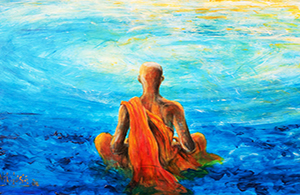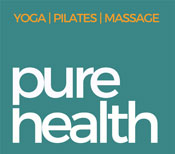Yoga Practice Tips: Let’s Redefine Advanced Yoga
 In 30 years of teaching, I can’t even begin to relate how many times I’ve heard people say that they can’t do yoga because they’re not flexible. Similarly, I wish I had a dollar for all the times I’ve heard a longtime student declare himself/herself to be “just” a beginner because in all these years he/she has never touched toes in a forward bend or done Upward Bow with straight arms. A few days ago I read a blog lamenting the yoga cultural emphasis on “advanced” poses and how all the social media photos of yoga practitioners in these poses is likely scaring people away from practice. This is probably true, and certainly a valid concern. But I want to take the discussion a step further and pose the question: “What is advanced yoga anyway?” Is “advanced yoga” the ability to slip easily into full Pigeon? Is it the ability to wedge your ankle behind your head? Is rocking arm balances on the beach advanced yoga?
In 30 years of teaching, I can’t even begin to relate how many times I’ve heard people say that they can’t do yoga because they’re not flexible. Similarly, I wish I had a dollar for all the times I’ve heard a longtime student declare himself/herself to be “just” a beginner because in all these years he/she has never touched toes in a forward bend or done Upward Bow with straight arms. A few days ago I read a blog lamenting the yoga cultural emphasis on “advanced” poses and how all the social media photos of yoga practitioners in these poses is likely scaring people away from practice. This is probably true, and certainly a valid concern. But I want to take the discussion a step further and pose the question: “What is advanced yoga anyway?” Is “advanced yoga” the ability to slip easily into full Pigeon? Is it the ability to wedge your ankle behind your head? Is rocking arm balances on the beach advanced yoga?Want To Kick A Bad Habit? Try Yoga.
 Whether it’s smoking, drinking or eating unhealthy foods, we all have bad habits we struggle to work through. There are many ways to attempt to eliminate such tendencies, but most of them don’t work. We can try to painstakingly hack away at the problem or deprive ourselves, but old behaviors are relentless – and they often come back to haunt us. To tackle those unhealthy habits for good, try a more holistic approach: yoga. Here’s why it works:
Whether it’s smoking, drinking or eating unhealthy foods, we all have bad habits we struggle to work through. There are many ways to attempt to eliminate such tendencies, but most of them don’t work. We can try to painstakingly hack away at the problem or deprive ourselves, but old behaviors are relentless – and they often come back to haunt us. To tackle those unhealthy habits for good, try a more holistic approach: yoga. Here’s why it works:
1. It cultivates self-awareness.
Most bad habits are so deeply rooted that they become your default response. When you go to reach for that candy bar or cigarette, for instance, you don’t think about it, you simply react to your craving. You need to force yourself to slow down and notice your compulsive behavior – that’s the first step to eliminating it. And, that’s where yoga comes in.
2. It requires commitment.
3. It gives you perspective.
Take the time to acknowledge your progress and don’t be too tough on yourself. When you recognize what you are capable of, it motivates you to advance. This feeling empowers you to make strides toward meaningful changes off the mat.
4. It provides a supportive and healthy community.
Nothing is more disheartening than finally taking the first steps to change your bad habits – only to be discouraged by your peers. Yoga brings together like-minded people who willingly choose to do something healthy for themselves every time they step on their mats. If you surround yourself with supportive people who are positive and want you to succeed, you feel stronger and more capable to take on obstacles. Knowing there is a whole community you don’t want to let down also encourages you to keep moving forward.
5. It holds you accountable to your goals.
6. It offers role models and coaches.
Here you can find more about Want To Kick A Bad Habit? Try Yoga.
5 Ways To Make Your St. Patrick’s Day Healthier
 Healthy Ways to Celebrate St. Patrick’s Day
Healthy Ways to Celebrate St. Patrick’s Day
1. Make your drink green: Whip up a kale or spinach smoothie. These green leafy veggies are nutritional powerhouses: they’re both good sources of fiber, iron, magnesium, potassium and calcium. They’re also high in carotenoids, a cancer-fighting antioxidant. Make a green smoothie with avocado, kale, bananas and almond milk. This nutrient, protein and literally green smoothie will keep you feeling full and satisfied while still letting you sport your Irish pride
2. Heavy, dense foods like sausages, mashed potatoes and corned beef hash. Substitute a green salad made with fresh spinach, strawberries and a light sprinkling of feta cheese. It’s fresh, healthy and mirrors the green, red and white colors of the Irish flag!
3. If you’re planning on attending a parade or pub crawl, consider biking there or walk! (anyway city centre is closed) We all know that cycling and walking is a great workout for your heart and a super fun group activity. Decorate your bicycle with recycled and thrift decorations to stay environmentally friendly and remember to always wear your helmet!
4. If you like to put your best Irish face forward by painting yourself with the colors of the Irish flag, consider this. Most store bought face paints contain high levels of artificial colors and ingredients that are both harmful to your skin and the environment. Making your own face paints using a mixture of cornstarch, organic face lotions, and natural or homemade food colorings are good for everybody!
5. Irish dance – Hoof it for a half hour and you could burn 150 calories. New to this form of folk dance? This video will teach you the basics.
Here you can find more about Healthy ways to celebrate St. Patricks days
Yoga – you are never to old to start
 1. Can Seniors (Above 65 Years) Do Yoga Asanas?
1. Can Seniors (Above 65 Years) Do Yoga Asanas?
2. What Kind Of Asanas Should One Do As Age Progresses?
3. Are There Any Easy Exercises For Senior People?
Restorative Yoga may be practiced independently or as part of a larger yoga plan. People of every age can practice and receive the benefits of these exercises that can be comfortably practiced within 20-30 minutes. It includes simple and gentle exercises for the neck, hands, feet, knees, ankles and hips.
4. Are You Getting Your Yoga Practice Right?
Check your inner gauge, your smile-o-meter. Just do as much as you can, with a smile, for that is the indicator, which tells you whether you are doing it right or not.
5. How Does Yoga Practice For Seniors Differ From Those For The Young?
6. Do Yoga Asanas Increase The Efficiency Of Immune System For The Elderly?
10 Reasons to Practice Restorative Yoga
Great Introductory Yoga & Pilates offer
Here you can learn more about Yoga for Seniors – Gentle Exercises
Karen’s Yin Yoga
 What is yin yoga?
What is yin yoga?
Yin yoga is a slow-paced, meditative style of yoga, we hold each asana (pose) for a period of time, usually around 3-5 minutes. In our yin practice we are focusing on our joints, applying moderate stress to the tendons, fascia and ligaments of the joint with the aim of increasing circulation and improving flexibility. A yin class can bring a lovely balance to a (usually yang) yoga practice, giving you time to slow down; softening, yielding and accepting yourself just as you are. The classes can still be quite challenging though, as holding a pose for a long time takes both mental and physical commitment.
What are the benefits?
We work mainly with the joints, the connective tissues of the hips, pelvis and lower spine. Yin aims to keep these joints flexible and juicy! There is also the meditative benefit, we try to come to a complete stillness in each pose; body, mind and breath all quietening and slowing down.
Who is it suitable for?
Yin is suitable for everyone, especially for those who are maybe more ‘yang’ in nature, if you find yourself busy and stressed then a yin class might help provide some much needed balance. Is there any preparation needed?
Is there any preparation needed?
Just wear comfortable clothes, as you would for any other yoga class. As we don’t move much, it could be good to have a warm top to keep cosy and it’s okay to keep socks on too. We use lots of props in yin, but these are all provided by the studio.
I look forward to seeing you in class one Sunday 🙂
Namaste
Karen
New Study Shows Yoga Has Healing Powers
 The more we learn about yoga, the more we realize the benefits aren’t all in the minds of the 20 million or so devotees in the U.S. Yoga helps people to relax, making the heart rate go down, which is great for those with high blood pressure. The poses help increase flexibility and strength, bringing relief to back pain sufferers.
The more we learn about yoga, the more we realize the benefits aren’t all in the minds of the 20 million or so devotees in the U.S. Yoga helps people to relax, making the heart rate go down, which is great for those with high blood pressure. The poses help increase flexibility and strength, bringing relief to back pain sufferers.Harvard Yoga Scientists Find Proof of Meditation Benefit


